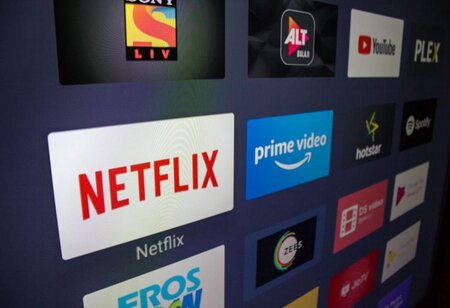Why OTT Platforms Are Gaining Popularity for Digital Marketing
By Sthitaprajnya Panigrahi
 As technology has taken the front seat in our lives, our tastes, preferences and lifestyles have changed magnificently. With our smart phones assuming the new source of entertainment and our key to the outer world, we can barely see a youngster glued to the TV these days. With the arrival of Over-The-Top (OTT) platforms such as Netflix, Amazon Prime, Hotstar and so on, we as audiences were introduced with the online streaming of web-series and movies. Soon the world became aware of the OTT marketing which is the delivery of ads through online video streaming. Comprising of connected TV advertising (CTV advertising), which runs video ad interruptions, banner ads, sponsored content and more, the OTT platform soon became one of the most desirable platforms to promote products and services. Different from the traditional TV advertisement, OTT marketing allows the companies to sidestep traditional TV advertisements and marketing, which usually control media and content distribution across regions.
As technology has taken the front seat in our lives, our tastes, preferences and lifestyles have changed magnificently. With our smart phones assuming the new source of entertainment and our key to the outer world, we can barely see a youngster glued to the TV these days. With the arrival of Over-The-Top (OTT) platforms such as Netflix, Amazon Prime, Hotstar and so on, we as audiences were introduced with the online streaming of web-series and movies. Soon the world became aware of the OTT marketing which is the delivery of ads through online video streaming. Comprising of connected TV advertising (CTV advertising), which runs video ad interruptions, banner ads, sponsored content and more, the OTT platform soon became one of the most desirable platforms to promote products and services. Different from the traditional TV advertisement, OTT marketing allows the companies to sidestep traditional TV advertisements and marketing, which usually control media and content distribution across regions.
Ensuring the marketers with a powerful tool to reach a wide range of audiences across the globe directly and at any time, the OTT platforms are gaining wide popularity at present for digital marketing. This article focuses on few points which describes the reason for escalating popularity of digital marketing across the OTT platforms and they are as follows:
1. Reaching the Target Audience:
With the unique user ID issued to the customers for the respective device in the OTT platform, the specific ID can be used to leverage the audience data to exactly target and thrust relevant ads on their OTT applications. For instance, if it is an apparel company that is targeting millennials, OTT platforms will enable the marketers to specifically target users who have shown an interest in sports and fitness-related content. Apart from that, targeting the audience can be based on various factors such as the device in use, region of the user, types of content, gender, age, ad preferences, browsing patterns, recommendations and so on. This specific type of targeting allows the companies to customize their content as per their targeted audience.
2. Viewability Measurement Metrics:
Irrespective of the common perception that viewability measurement is not effective for OTT, brands can still get insights into the viewability of the ads. OTT platforms generally do not permit the third-party scripts to run on their content owing to the risk of interrupting a user’s viewing experience, if in a specific occasion the script fails to run as designed. An advertising agency or company can make a deal with the publishers to push their ads safely without disturbing the content viewing experience. This prgrammatic Demand-Side buying Platforms (DSPs) can ensure reporting insights into ad completion rates on OTT.
3. Undivided Attention of the Viewers:
It has been estimated that more than one-third of OTT visits are approx. over an hour long and most of the viewers mostly view a fairly large share of all premium video advertisements. By choosing OTT advertising, brands have a choice to provide appropriate content according to the interests of their target audience. In OTT advertising, brands can certainly penetrate deeper into understanding the consumer’s viewing preferences and offer content that will lead to improved engagement with the viewer.
4. Effective ROI:
In case of traditional TV advertising, the larger audience size makes it difficult to make the advertisements relevant for each viewer. But in case of an OTT platform, you can very well define your target audience and market ads that are only appropriate and engaging. Effective engagement will lead to generate much better ROI than compared to traditional forms of advertising.




